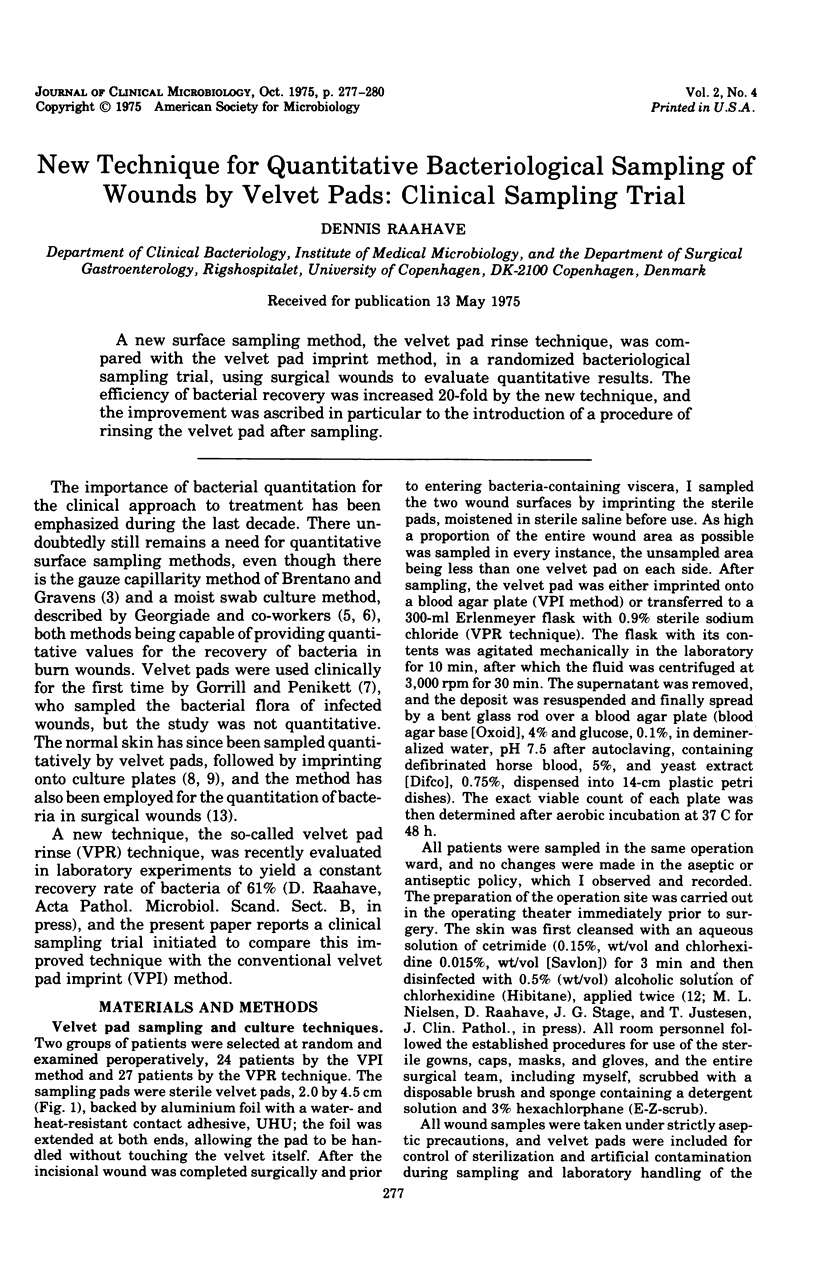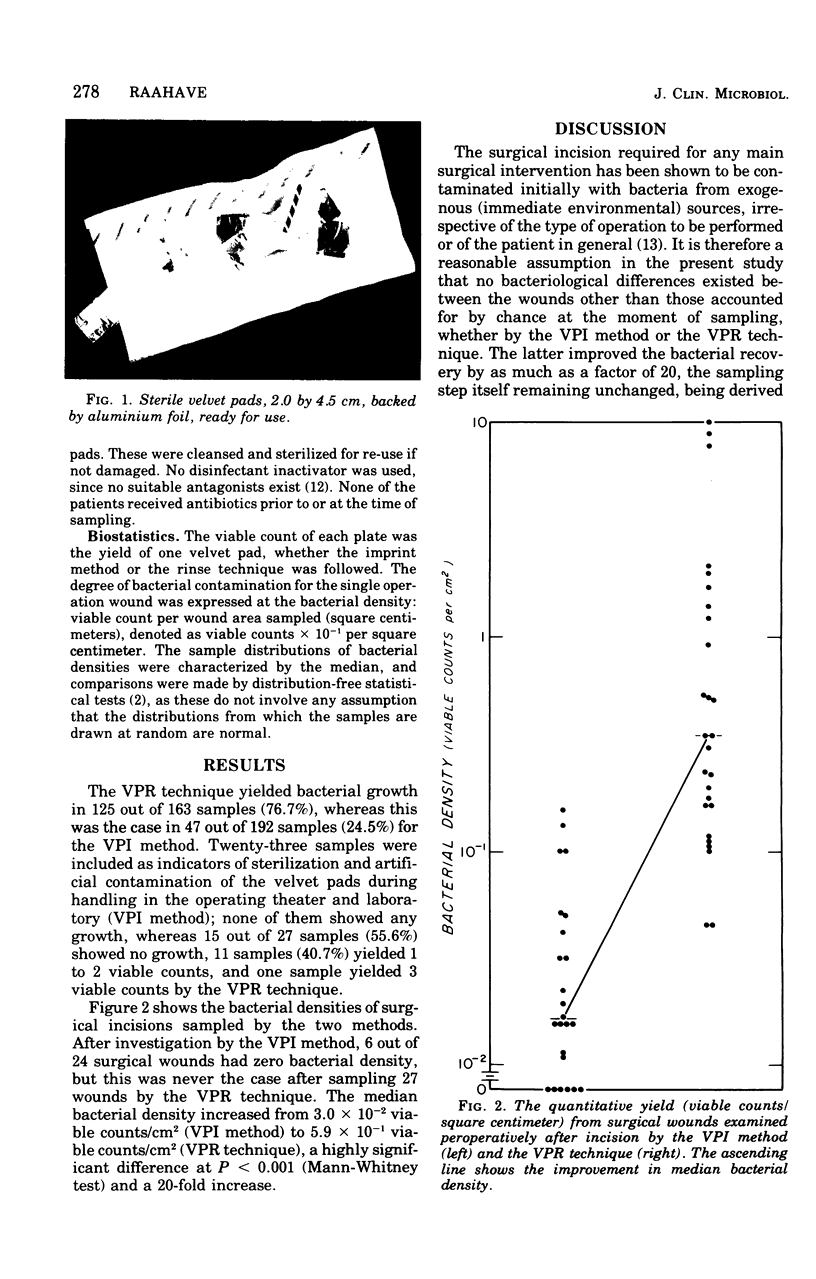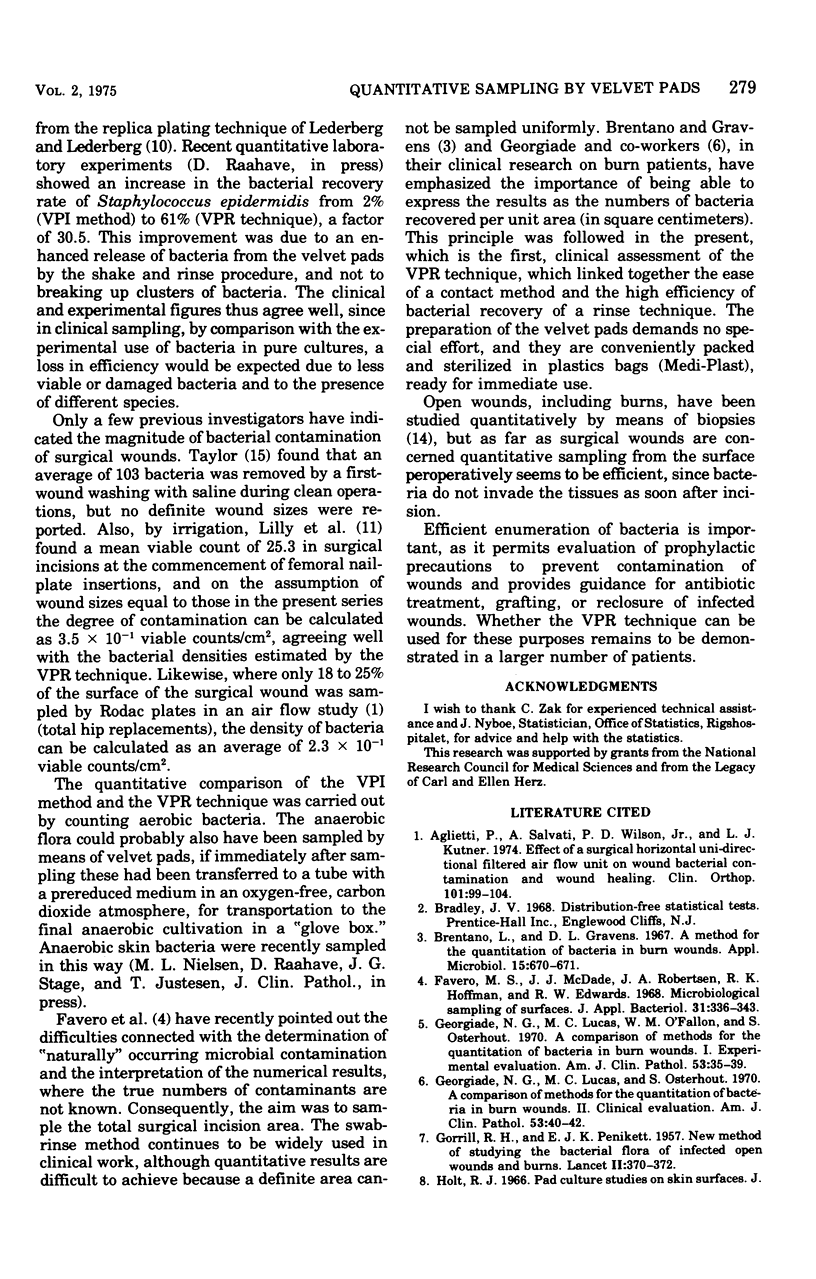Abstract
A new surface sampling method, the velvet pad rinse technique, was compared with the velvet pad imprint method, in a randomized bacteriological sampling trial, using surgical wounds to evaluate quantitative results. The efficiency of bacterial recovery was increased 20-fold by the new technique, and the improvement was ascribed in particular to the introduction of a procedure of rinsing the velvet pad after sampling.
Full text
PDF



Images in this article
Selected References
These references are in PubMed. This may not be the complete list of references from this article.
- Aglietti P., Salvati E. A., Wilson P. D., Jr, Kutner L. J. Effect of a surgical horizontal unidirectional filtered air flow unit on wound bacterial contamination and wound healing. Clin Orthop Relat Res. 1974 Jun;(101):99–104. [PubMed] [Google Scholar]
- Brentano L., Gravens D. L. A method for the quantitation of bacteria in burn wounds. Appl Microbiol. 1967 May;15(3):670–671. doi: 10.1128/am.15.3.670-671.1967. [DOI] [PMC free article] [PubMed] [Google Scholar]
- Favero M. S., McDade J. J., Robertsen J. A., Hoffman R. K., Edwards R. W. Microbiological sampling of surfaces. J Appl Bacteriol. 1968 Sep;31(3):336–343. doi: 10.1111/j.1365-2672.1968.tb00375.x. [DOI] [PubMed] [Google Scholar]
- GORRILL R. H., PENIKETT E. J. New method of studying the bacterial flora of infected open wounds and burns. Lancet. 1957 Aug 24;273(6991):370–372. doi: 10.1016/s0140-6736(57)92596-5. [DOI] [PubMed] [Google Scholar]
- Georgiade N. G., Lucas M. C., O'Fallon W. M., Osterhout S. A comparison of methods for the quantitation of bacteria in burn wounds. I. Experimental evaluation. Am J Clin Pathol. 1970 Jan;53(1):35–39. doi: 10.1093/ajcp/53.1.35. [DOI] [PubMed] [Google Scholar]
- Georgiade N. G., Lucas M. C., Osterhout S. A comparison of methods for the quantitation of bacteria in burn wounds. II. Clinical evaluation. Am J Clin Pathol. 1970 Jan;53(1):40–42. doi: 10.1093/ajcp/53.1.40. [DOI] [PubMed] [Google Scholar]
- Holt R. J. Aerobic bacterial counts on human skin after bathing. J Med Microbiol. 1971 Aug;4(3):319–327. doi: 10.1099/00222615-4-3-319. [DOI] [PubMed] [Google Scholar]
- LEDERBERG J., LEDERBERG E. M. Replica plating and indirect selection of bacterial mutants. J Bacteriol. 1952 Mar;63(3):399–406. doi: 10.1128/jb.63.3.399-406.1952. [DOI] [PMC free article] [PubMed] [Google Scholar]
- Lilly H. A., Lowbury E. J., London P. S., Porter M. F. Effects of adhesive drapes on contamination of operation wounds. Lancet. 1970 Aug 29;2(7670):431–432. doi: 10.1016/s0140-6736(70)90053-x. [DOI] [PubMed] [Google Scholar]
- Raahave D. Agar contact plates in evaluation of skin-disinfection. Dan Med Bull. 1973 Dec;20(6):204–208. [PubMed] [Google Scholar]
- Raahave D. Bacterial density in operation wounds. Acta Chir Scand. 1974;140(8):585–593. [PubMed] [Google Scholar]
- Robson M. C., Heggers J. P. Bacterial quantification of open wounds. Mil Med. 1969 Jan;134(1):19–24. [PubMed] [Google Scholar]
- TAYLOR F. W. An experimental evaluation of operative wound irrigation. Surg Gynecol Obstet. 1961 Oct;113:465–470. [PubMed] [Google Scholar]



